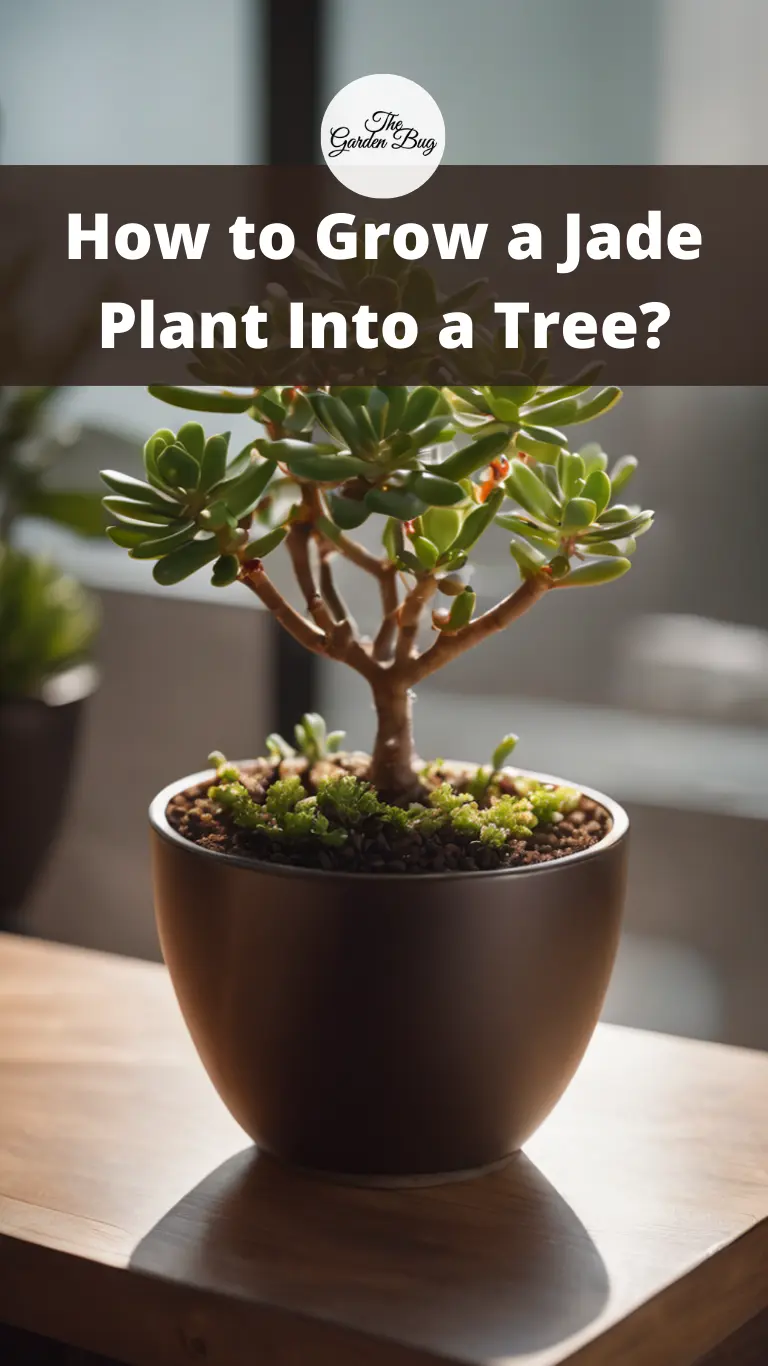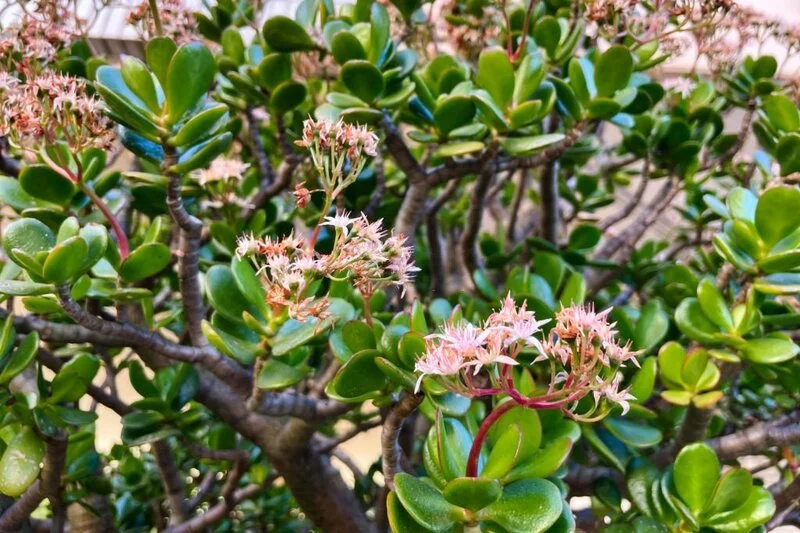Welcome to the fascinating world of jade plants! These succulents, with their shiny, oval leaves and thick stems, are not just attractive but incredibly versatile. While they are often seen growing in a bushy, shrubby form, did you know that with a little patience and care, you can shape your jade plant to look like a miniature tree? Yes, a charming, bonsai-style jade tree right in your living room! This journey of transforming a jade plant into a tree is not only rewarding, but it’s also a fantastic way to connect with nature and enhance your green thumb skills. So, are you ready to venture into this new aspect of indoor gardening? Let’s get started!
Understanding Jade Plants
Before we dive into shaping your jade plant, it’s important to know what makes these plants so special. Jade plants, known scientifically as Crassula ovata, are native to South Africa and Mozambique. They are known for their resilience and adaptability, making them perfect houseplants.
One of the standout features of jade plants is their woody stems and fleshy, glossy leaves that store water. Over time, and with the right care, these stems become thicker and more tree-like. This characteristic is what allows us to train and shape jade plants into a tree form. They also have a naturally branching growth pattern which can be manipulated through selective pruning.
Understanding your jade plant is the first step towards creating a stunning jade tree. In the next section, we’ll discuss how to choose the right jade plant for this exciting project. Stay tuned!
Choosing the Right Jade Plant
Picking the right jade plant is the starting point of our tree-shaping journey. Here are some factors to consider:
- Health: Choose a plant that’s healthy and thriving. Look for lush, plump leaves, a sign that the jade plant is well-hydrated and free from diseases and pests.
- Age: An older, more mature jade plant will have thicker, more robust stems, making it easier to shape into a tree-like structure.
- Size: Starting with a larger plant can be beneficial because it’ll already have some height and branching. But remember, a bigger plant requires more space and care.
- Growth Pattern: If possible, choose a jade plant with a growth pattern that already somewhat resembles a tree, with a strong central stem and some branching.
Tools and Materials Needed
Once you’ve selected your jade plant, gather these essential tools and materials for shaping your jade tree:
- Pruning Shears: A good pair of sharp pruning shears is crucial. Clean, sharp cuts are better for the plant’s health and growth.
- Wire: Flexible, soft wire is useful for directing the growth of your jade plant. Choose a wire that is strong enough to guide the branches but gentle enough not to damage them.
- Rubbing Alcohol: To disinfect your shears before and after pruning to prevent the spread of disease.
- Gloves: While jade plants aren’t thorny, wearing gloves can give you a better grip and keep your hands clean during the process.
Now that we have our jade plant and tools ready, let’s get to the exciting part: shaping your jade plant into a tree! Keep reading to find out how.
Pruning and Shaping Your Jade Plant: Step-by-Step
Get ready to bring out the jade tree hidden within your plant! Here’s how you do it:
- Plan Your Shape: First, visualize the tree shape you want. Identify the primary “trunk” and decide which branches you want to keep and shape.
- Pruning: Start by pruning lower leaves and branches using your disinfected shears, focusing on the trunk and main branches to encourage a tree-like shape.
- Wiring: If necessary, gently use soft wire to guide the direction of the branches. Be careful not to damage the branch or impede growth.
- Gradual Shaping: It’s important to note that shaping your jade plant is a gradual process, don’t rush it. Gradually prune and shape over a period of weeks or months.
- Allow Healing: After each pruning session, give your plant some time to heal. Wait for callouses to form over the cuts before you water the plant again.
Caring for Your Jade Tree
Growing your jade tree doesn’t end with pruning and shaping. Here’s how to care for your newly shaped jade plant:
- Light: Jade plants love bright light, so place it near a south or west-facing window if possible.
- Watering: Jade plants store water in their leaves, so they don’t need frequent watering. Water thoroughly and then let the soil dry out completely before watering again.
- Temperature: Jade plants prefer room temperature and can tolerate a bit cooler at night, but avoid frosty or extremely hot conditions.
- Repotting: Repot your jade plant every couple of years or if it becomes top-heavy. Use a well-draining soil mix designed for succulents.
- Patience: Remember, shaping a jade plant into a tree is a gradual process. Patience is key! With time, you’ll see your jade plant take on a beautiful, tree-like appearance.
Common Problems and Solutions
Turning your jade plant into a tree is a rewarding journey, but it’s not without its challenges. Here are a few common issues and their solutions:
- Overwatering: This is the most common issue. If your jade plant’s leaves are yellow or soft, you’re probably watering too much. Allow the soil to dry out completely between watering.
- Pests: Watch out for common pests like mealybugs. If you see tiny white cottony clusters, you may have an infestation. Treat it with a gentle insecticidal soap or a homemade mixture of water and mild dish soap.
- Insufficient Light: If your plant is getting leggy or its vibrant green is fading, it might need more light. Move it to a brighter location, but be careful of direct, harsh sunlight which can scorch the leaves.
- Wrong Pruning: If your jade plant isn’t taking a tree-like shape, you might be pruning it incorrectly. Remember, the goal is to encourage a strong, single stem with branching on top, similar to a tree.
Conclusion
There you have it, your ultimate guide to turning a jade plant into a beautiful mini tree! It might seem daunting, but remember, every great gardener started from scratch. And the best part? You’ll learn and grow alongside your jade plant, experiencing the joy of watching it transform from a bushy succulent into an elegant tree. So, why wait? Grab your tools, pick out your jade plant, and get started on this exciting journey.



